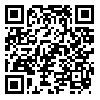سه شنبه 25 آذر 1404
[Archive]
دوره 3، شماره 1 - ( Winter 2015-- 1393 )
جلد 3 شماره 1 صفحات 60-47 |
برگشت به فهرست نسخه ها
Download citation:
BibTeX | RIS | EndNote | Medlars | ProCite | Reference Manager | RefWorks
Send citation to:



BibTeX | RIS | EndNote | Medlars | ProCite | Reference Manager | RefWorks
Send citation to:
Kaviani S, Eskandari H, Ebrahimi Ghavam S. The Relationship between Scrupulosity, Obsessive-Compulsive Disorder and Its Related Cognitive Styles. PCP 2015; 3 (1) :47-60
URL: http://jpcp.uswr.ac.ir/article-1-183-fa.html
URL: http://jpcp.uswr.ac.ir/article-1-183-fa.html
The Relationship between Scrupulosity, Obsessive-Compulsive Disorder and Its Related Cognitive Styles. Practice in Clinical Psychology. 1393; 3 (1) :47-60
چکیده: (7014 مشاهده)
Objective: This research aimed to study the relationship between scrupulosity and obsessivecompulsive symptoms as well as obsessive-compulsive-related cognitive styles (obsessive beliefs and thought-action fusion).
Methods: This was a correlational study. The study population included all individuals who referred to counseling centers of Tehran from August to December 2010 and diagnosed with obsessive-compulsive disorder, and also all Persian speakers with OCD who were active in internet from August to November 2012. A total of 30 individuals with obsessive-compulsive disorder (mostly Iranian Muslims) were recruited from different psychological counseling centers in Tehran. In addition, 50 individuals with OCD (obsessive-compulsive disorder) were recruited via internet social networks. For screening, we used Obsessive-Compulsive Inventory-Revised (OCI-R). Convenience method was used for the sampling. In order to collect data, Penn Inventory of Scrupulosity (PIOS), Thought-Action Fusion Scale (TAF), Depression Anxiety Stress Scale (DASS-21), Obsessive-Compulsive Inventory-Revised (OCI-R), and Obsessive Beliefs Questionnaire (OBQ) were administered. Pearson correlation coefficient and regression analysis were used to analyze the data. SPSS version 18 was used for data analysis.
Results: Results showed that there were significant relationships between scrupulosity and obsessive-compulsive symptoms total score (r=0.275, P<0.05) also scrupulosity and obsessive beliefs (r=0.558, P<0.01) and scrupulosity and thought-action fusion (r=0.506, P<0.01). Results also revealed that the variations in scrupulosity scores could be best predicted by ‘anxiety’ and ‘Importance and Control of Thoughts.’ Scrupulosity is a subtype of OCD and is obsessive in nature.
Conclusion: As explained by cognitive-behavioral theories of religious OCD, scrupulosity is closely related to the ‘Importance of Thoughts and Controlling Thoughts,’ as well as moral and probability ‘Thought-action Fusion.’ The results were in accordance with the findings of comparable studies on Christian samples. Results were explained according to Islamic views, and the implications for research and practice were discussed.
نوع مطالعه: پژوهشي |
موضوع مقاله:
رويكرد شناختي رفتاري
دریافت: 1393/5/26 | پذیرش: 1393/9/7 | انتشار: 1393/10/11
دریافت: 1393/5/26 | پذیرش: 1393/9/7 | انتشار: 1393/10/11
| بازنشر اطلاعات | |
 |
این مقاله تحت شرایط Creative Commons Attribution-NonCommercial 4.0 International License قابل بازنشر است. |

